Introduction
Requirements
Communication concept
Structure of this document
Interaction Layer
Overview
Introduction
Communication concept
Configuration
Message reception
Message reception overview
Reception filtering
Copying message data into message objects data area
Copying data to application messages
Unqueued and queued messages
Queued message
Unqueued message
Message transmission
Message transmission overview
Transfer of internal messages
Transfer properties for external communication
Triggered Transfer Property
Pending Transfer Property
Transmission modes
Direct Transmission Mode
Periodic Transmission Mode
Mixed Transmission Mode
Activation / Deactivation of periodic transmission mechanism
Message filtering algorithm
Byte ordering
Deadline monitoring
Reception Deadline Monitoring
Transmission Deadline Monitoring
Direct Transmission Mode
Periodic Transmission Mode
Mixed Transmission Mode
Notification
Notification classes
Notification mechanisms
Interface for callback routines
Communication system management
Initialisation / Shutdown
Error handling
General remarks
Error hook routine
Error management
Functional model of the Interaction Layer
Interfaces
Interface to OSEK Indirect NM
I-PDU transfer indication
I-PDU time-out indication
Application Program Interface (API)
Service parameter types
StatusType
SymbolicName
ApplicationDataRef
LengthRef
FlagValue
COMApplicationModeType
COMShutdownModeType
CalloutReturnType
COMServiceIdType
Start-up services
StartCOM
StopCOM
GetCOMApplicationMode
InitMessage
StartPeriodic
StopPeriodic
Notification mechanism support services
ReadFlag
ResetFlag
Communication services
SendMessage
ReceiveMessage
SendDynamicMessage
ReceiveDynamicMessage
SendZeroMessage
GetMessageStatus
COMErrorGetServiceId
Routines provided by the application
StartCOMExtension
Callouts
COMErrorHook
COMError_Name1_Name2 macros
Minimum requirements of lower communication layers
Conformance Classes
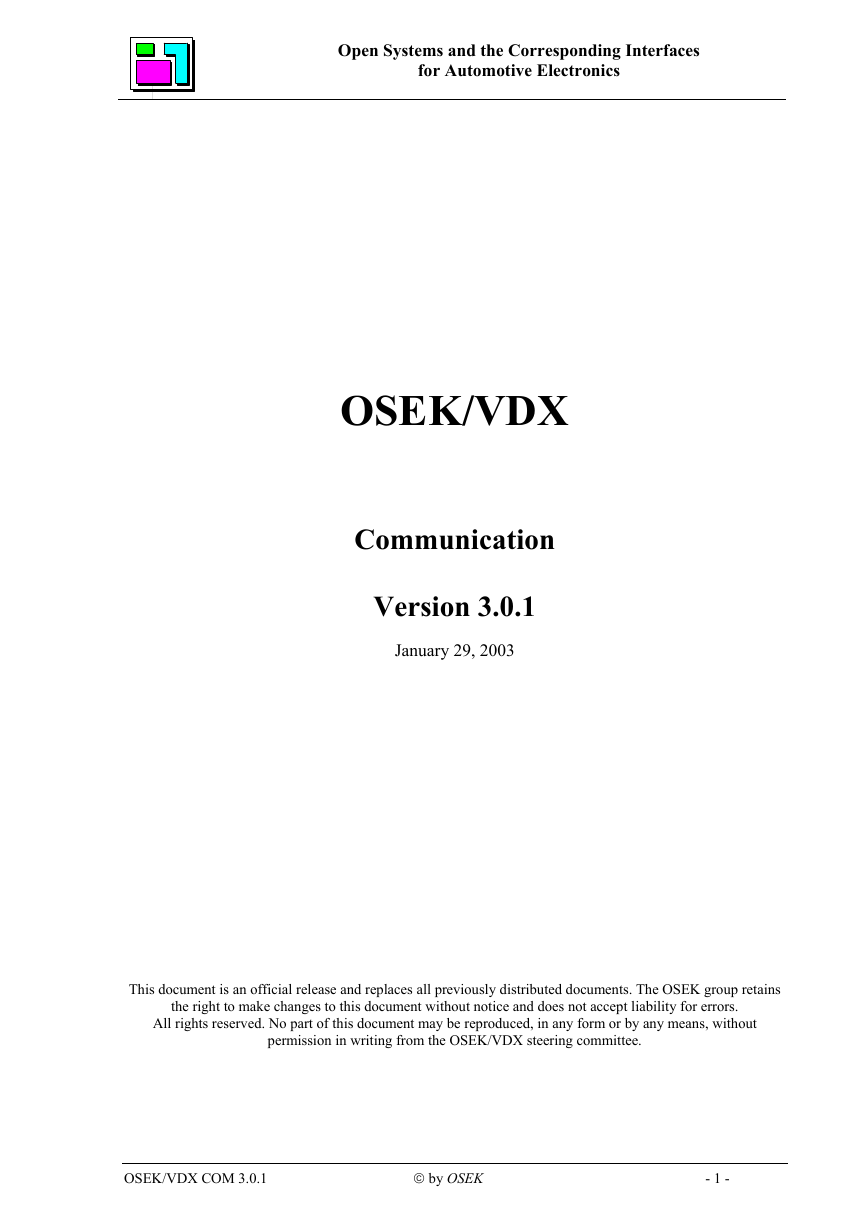
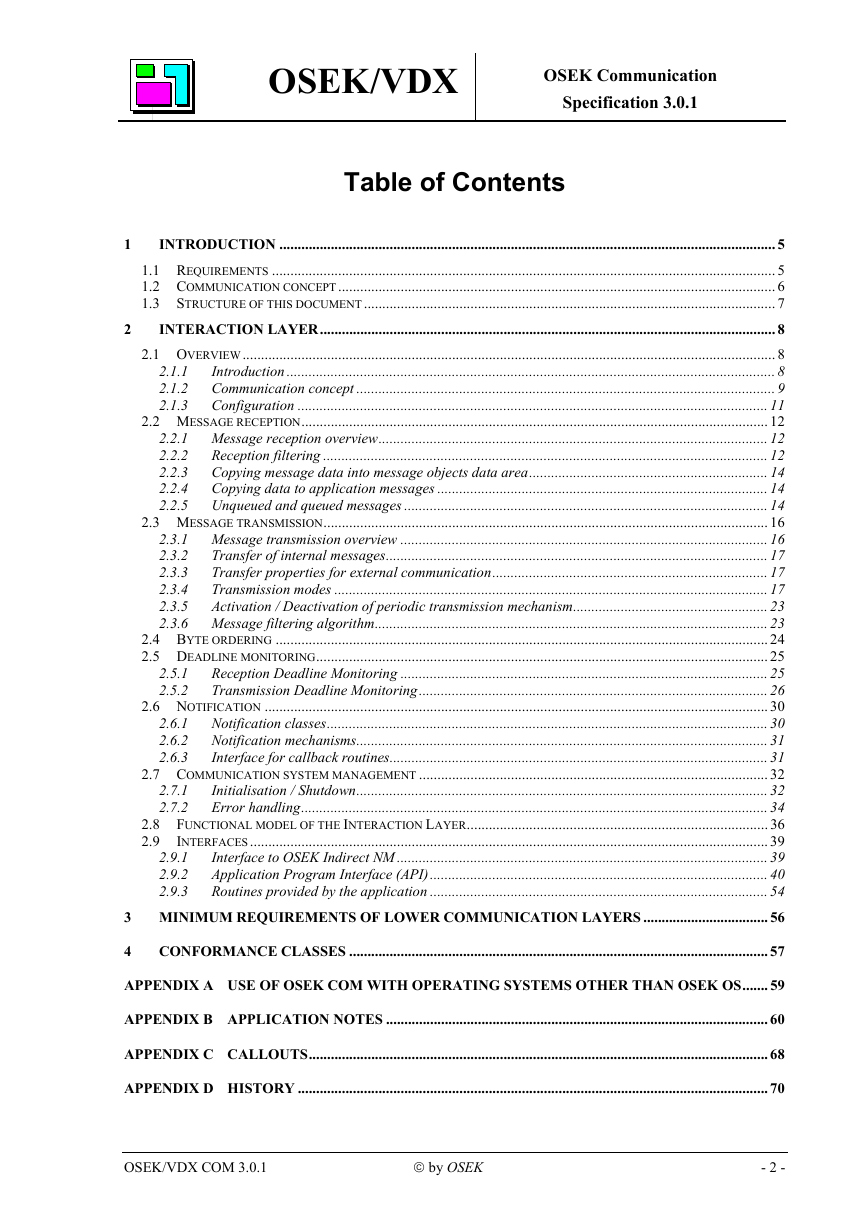
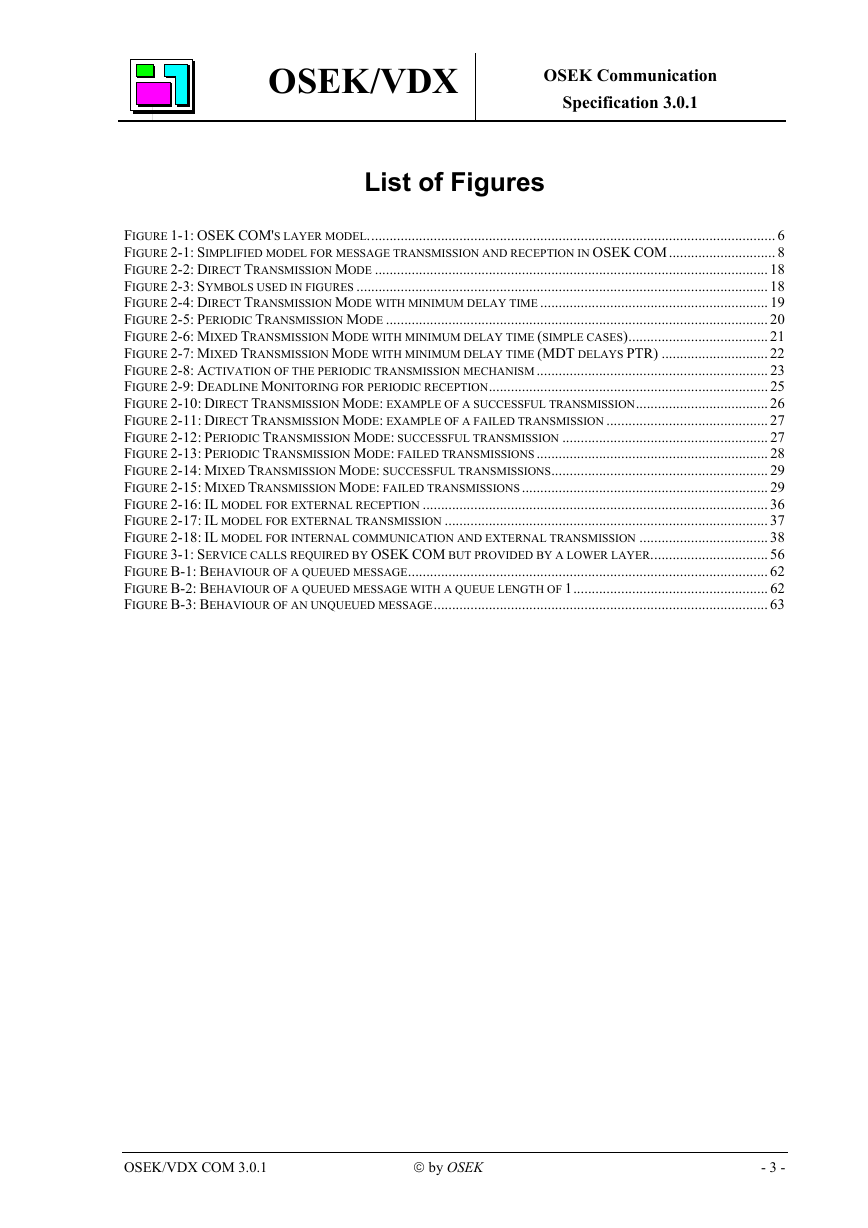
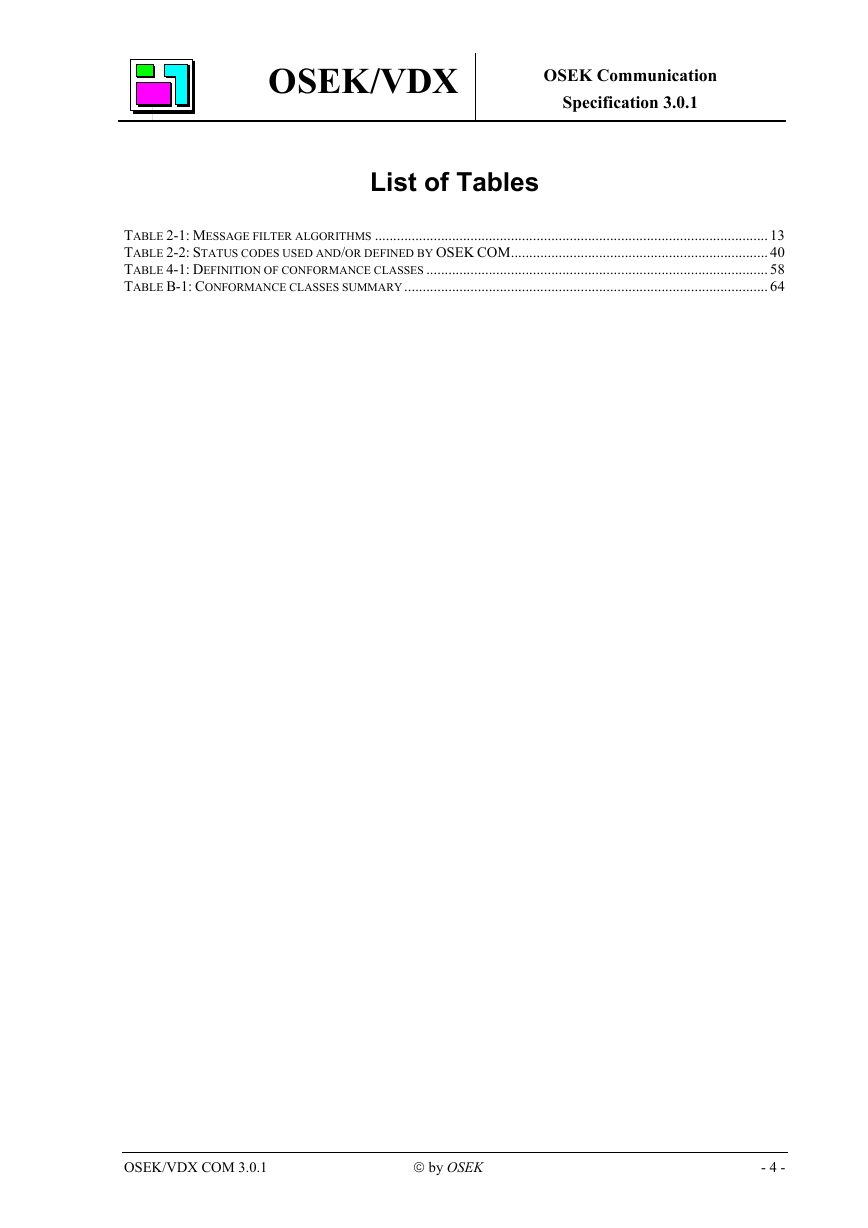
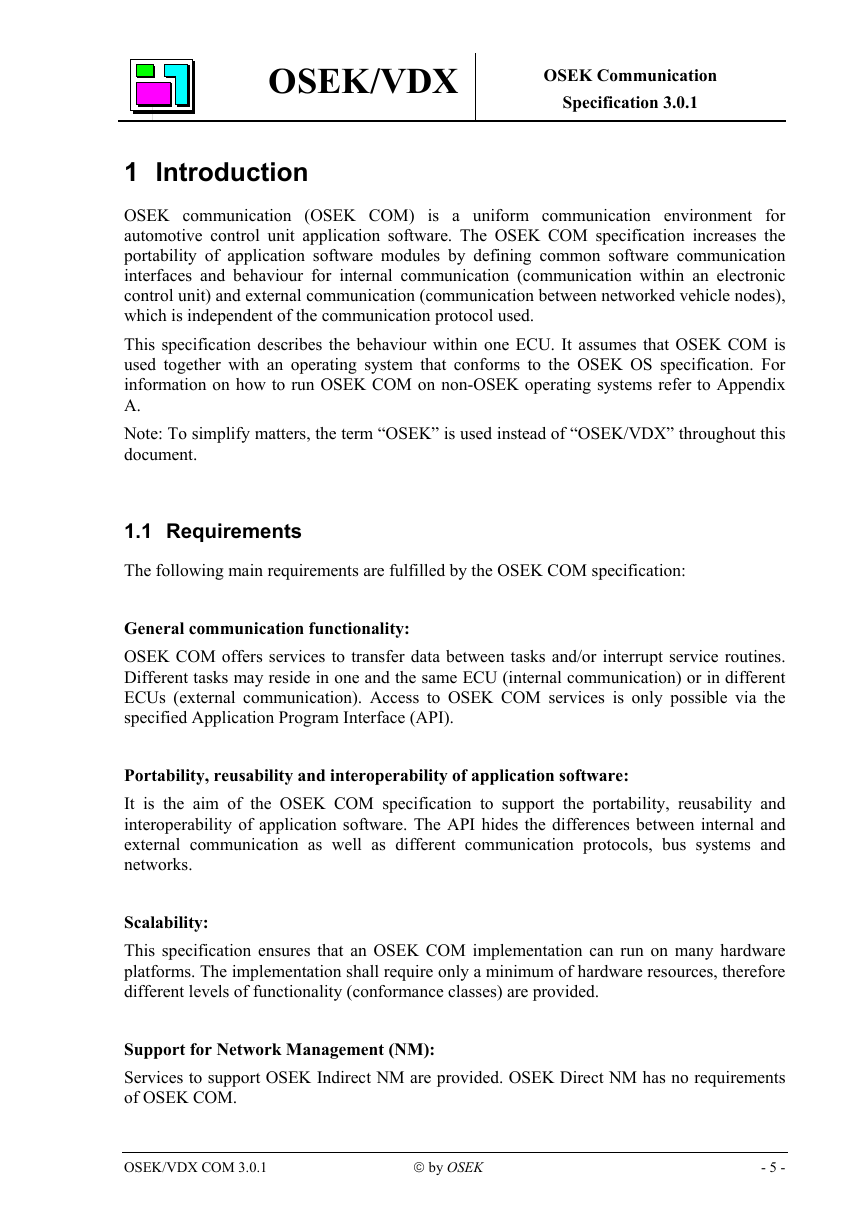
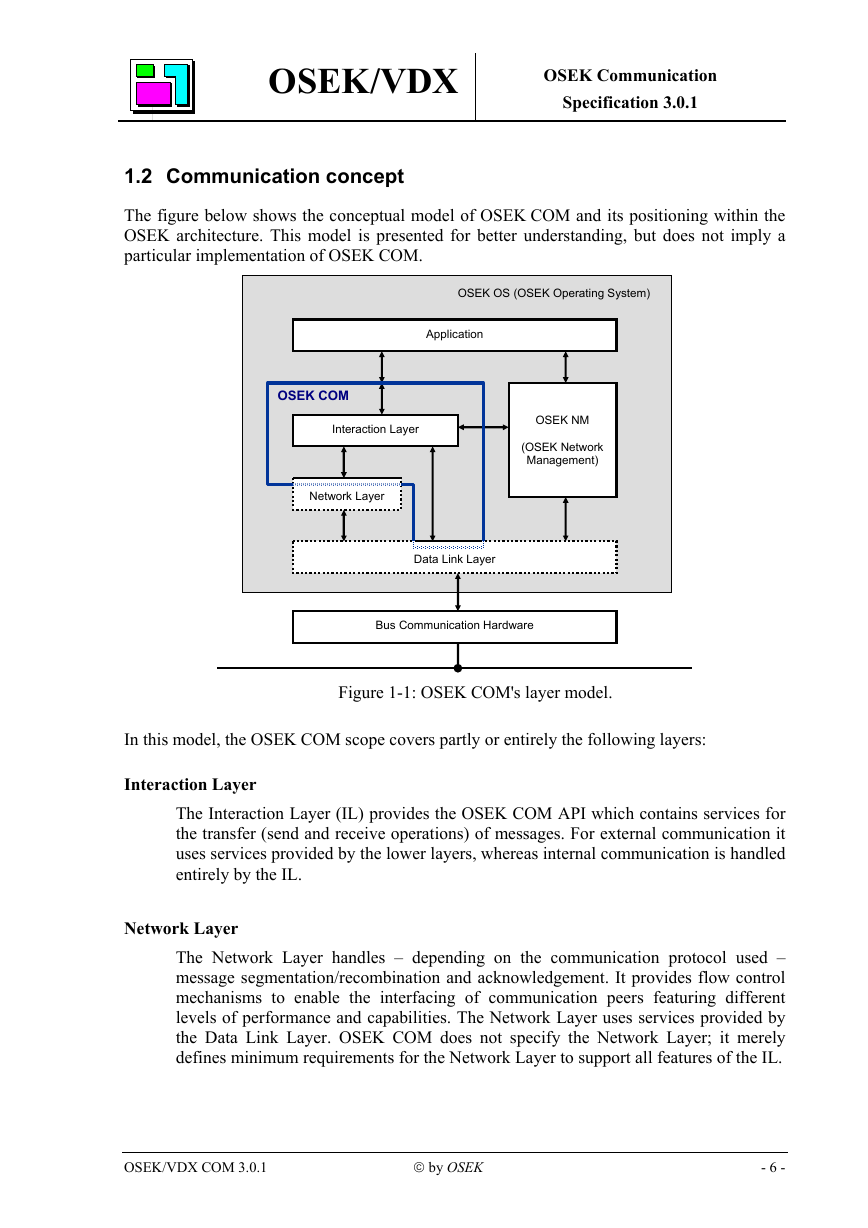
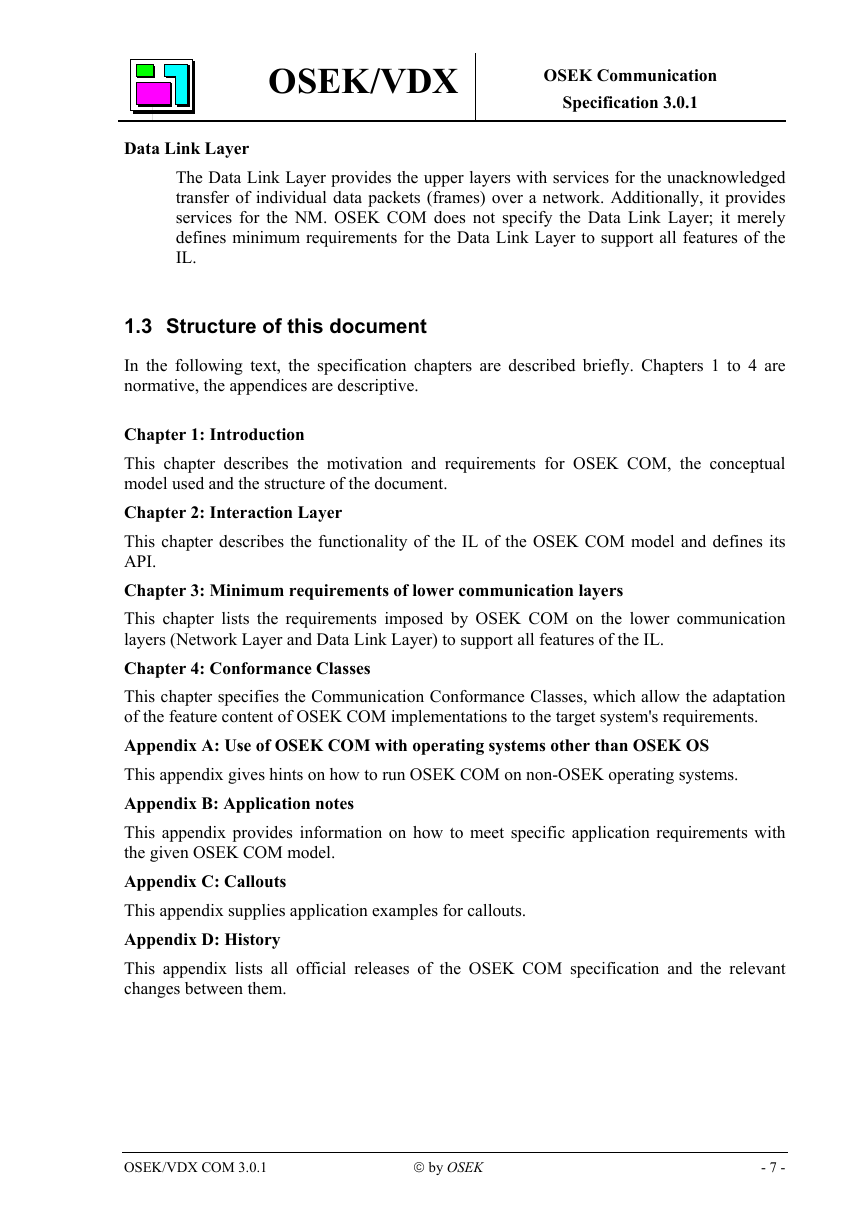









 2023年江西萍乡中考道德与法治真题及答案.doc
2023年江西萍乡中考道德与法治真题及答案.doc 2012年重庆南川中考生物真题及答案.doc
2012年重庆南川中考生物真题及答案.doc 2013年江西师范大学地理学综合及文艺理论基础考研真题.doc
2013年江西师范大学地理学综合及文艺理论基础考研真题.doc 2020年四川甘孜小升初语文真题及答案I卷.doc
2020年四川甘孜小升初语文真题及答案I卷.doc 2020年注册岩土工程师专业基础考试真题及答案.doc
2020年注册岩土工程师专业基础考试真题及答案.doc 2023-2024学年福建省厦门市九年级上学期数学月考试题及答案.doc
2023-2024学年福建省厦门市九年级上学期数学月考试题及答案.doc 2021-2022学年辽宁省沈阳市大东区九年级上学期语文期末试题及答案.doc
2021-2022学年辽宁省沈阳市大东区九年级上学期语文期末试题及答案.doc 2022-2023学年北京东城区初三第一学期物理期末试卷及答案.doc
2022-2023学年北京东城区初三第一学期物理期末试卷及答案.doc 2018上半年江西教师资格初中地理学科知识与教学能力真题及答案.doc
2018上半年江西教师资格初中地理学科知识与教学能力真题及答案.doc 2012年河北国家公务员申论考试真题及答案-省级.doc
2012年河北国家公务员申论考试真题及答案-省级.doc 2020-2021学年江苏省扬州市江都区邵樊片九年级上学期数学第一次质量检测试题及答案.doc
2020-2021学年江苏省扬州市江都区邵樊片九年级上学期数学第一次质量检测试题及答案.doc 2022下半年黑龙江教师资格证中学综合素质真题及答案.doc
2022下半年黑龙江教师资格证中学综合素质真题及答案.doc